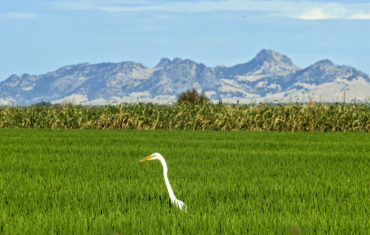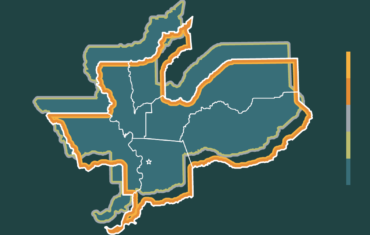Agricultural Biomass: Putting the Pieces Together
California’s progress on biomass utilization is like putting together a puzzle – we have the edges in place, but we are still figuring out how everything connects in the middle. Biomass is an enormous opportunity to address our energy and agricultural/forest management needs, but there are significant barriers to scalable use of the abundant resource – or waste stream, depending on how you view it.
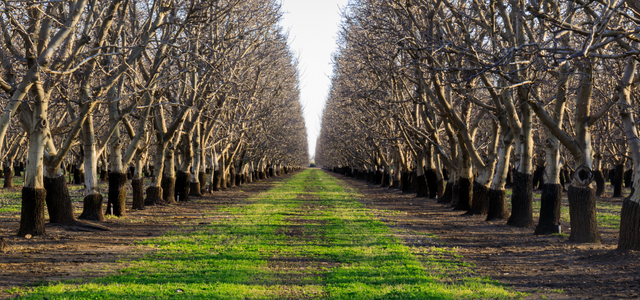
Source: Fruit tree orchard in Winters, CA (Yolo County)
On October 5th, 2023, Valley Vision staff had the opportunity to visit the City of Winters in Yolo County for a two-day conference on the opportunities and challenges of agricultural biomass. The conference was hosted by the Sacramento Valley Basinwide Air Pollution Control Council, who brought together a group of local and state stakeholders including agricultural businesses, regulators, policymakers and researchers. At the conference, stakeholders zeroed in on the current landscape of agricultural biomass, and fueled discussions around opportunities for agricultural biomass utilization.
We were able to hear from business and research experts in the biomass space, discuss benefits of alternative uses of agricultural biomass, and learn from agricultural producers about their experiences with agricultural biomass applications.
The Current Landscape of Agricultural Biomass
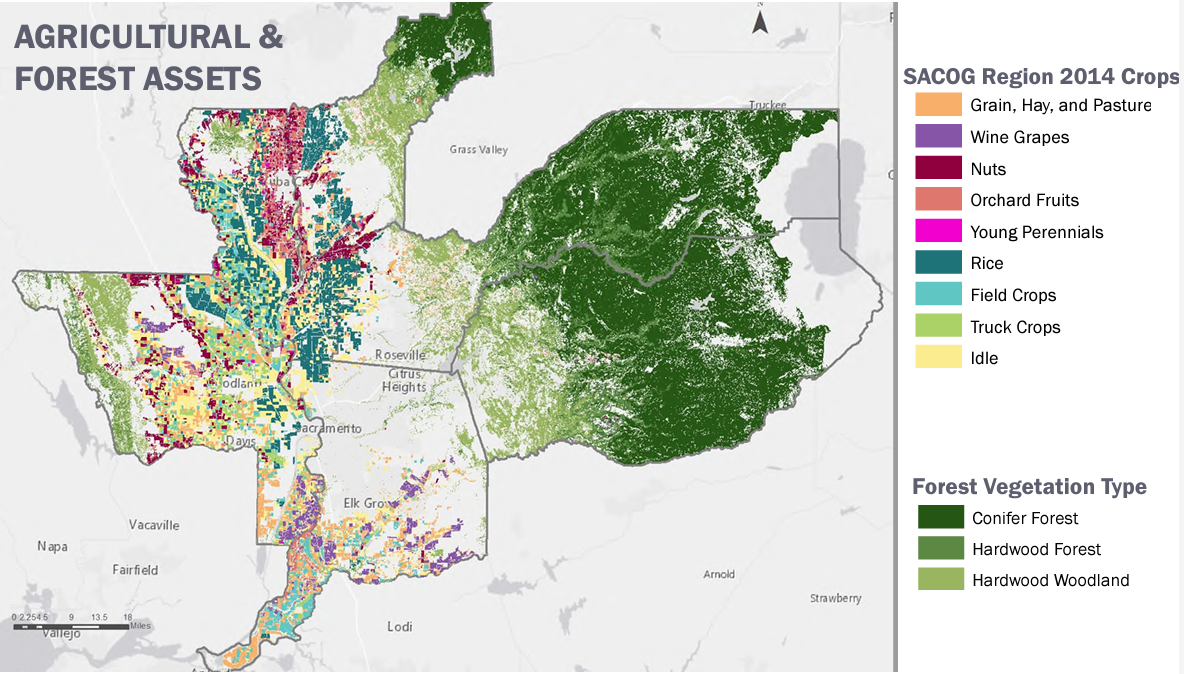
Source: Sacramento Area Council of Governments (SACOG) Rural-Urban Connections Strategy (2014)
There are three primary sources of biomass – biomass derived from municipal waste, biomass derived from agriculture, and biomass derived from forests. Agricultural biomass is agricultural waste, comprising food scraps, orchard trimmings, nut shells, and livestock waste. In the Central Valley, the agricultural industry is a leading economic driver, resulting in abundant and renewable agricultural biomass from farming operations as a continuously-generated resource. According to the California Department of Food and Agriculture in 2022, agriculture accounted for $55 Billion in economic activity, equating to tons of agricultural waste that either ends up in landfills or is discarded in open burning.
Why Ag Biomass?
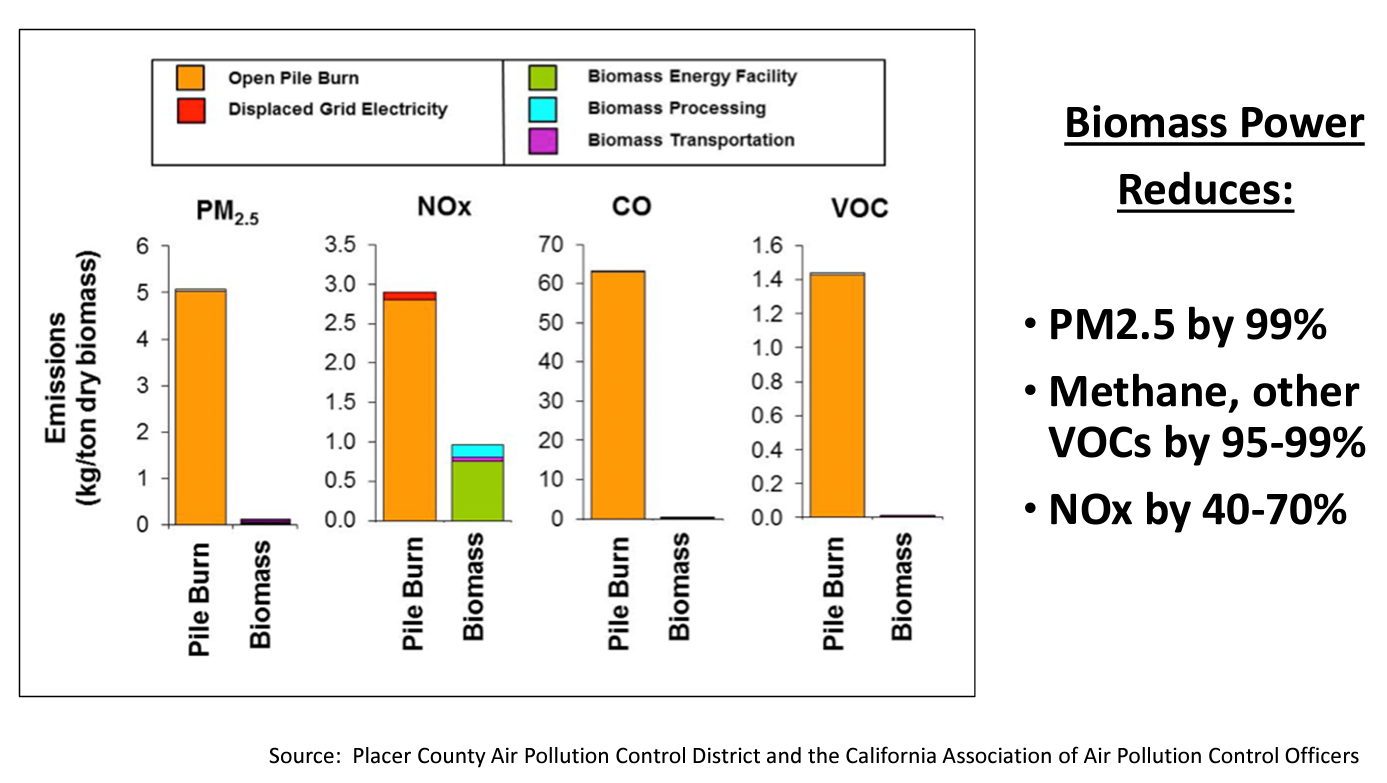
Adding to the abundance of agricultural biomass present in our local and regional economy, there is an increasing need to sustainably, economically and equitably manage this resource. At the conference in Winters, diverting agricultural biomass for alternative uses and associated benefits was discussed. Below are some key takeaways from the conference:
- Climate change impacts – the largest source of methane gas is from the agricultural sector, followed by landfills and the energy sector
- Open burning of agricultural biomass contributes to poor air quality through increased emissions and prevents our region from meeting state and federal air quality standards
- There is an increasing need for clean, renewable energy and fuel sources
- Open burn piles endangers residents and wildlife
- Benefits to agriculture include improved soil, plant health and water efficiency from compost and mulching applications
Envisioning a Future for Ag Biomass:
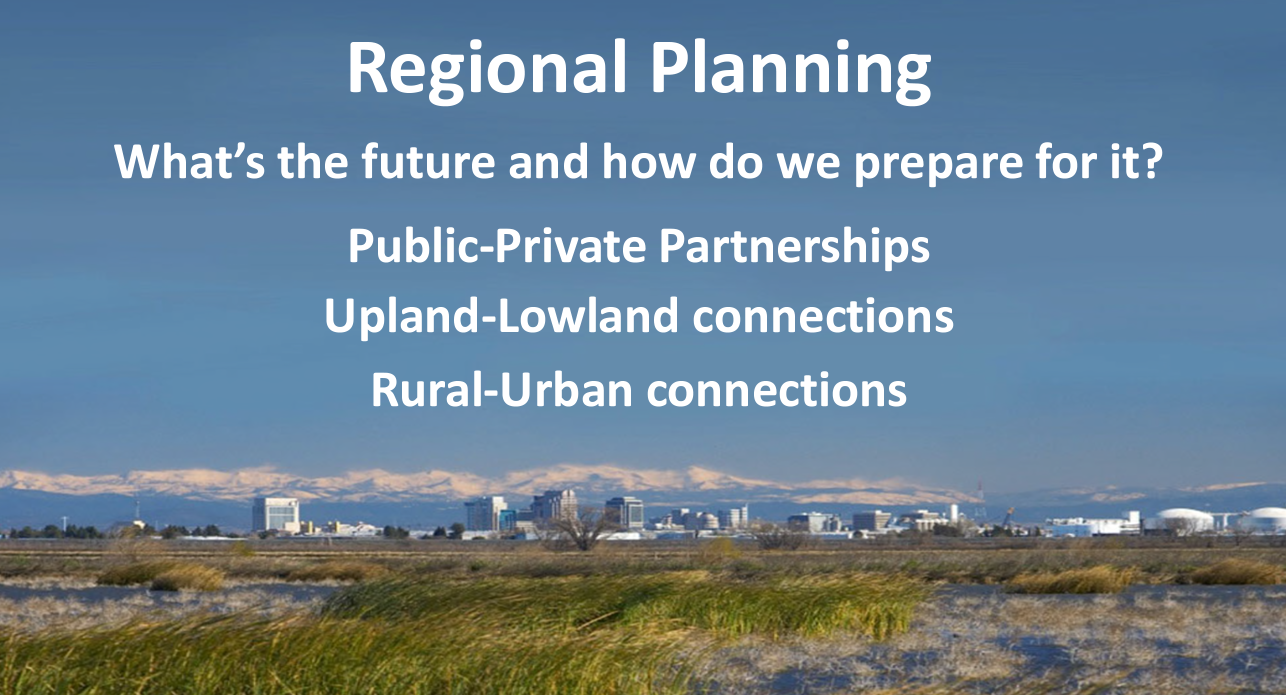
Source: Agricultural Biomass Conference in Winters, CA (Oct. 2023).
Notably, we are in the middle of a clean energy transition and biomass utilization plays a key role in this transition. Agricultural biomass utilization is a multi-benefit approach to managing agricultural waste and mitigating climate change impacts. It is a viable strategy that strengthens rural-urban connections and public-private partnerships, which is what we need in order to solve our region’s most pressing issues. Agricultural biomass should be branded as a value-added resource and not just waste that ends up in landfills or burned in open piles.
Currently, there is a high demand for renewable fuel sources as our state moves towards carbon neutrality and more modernized biomass facilities are much needed in our region. Modernized facilities are an opportunity for the agricultural industry, including local and regional governments and private sector interests to manage agricultural waste efficiently and sustainably, as well as provide valuable and marketable resources that support other sectors, too. The time to act is now as massive federal funding from the Inflation Reduction Act and the Infrastructure Investment and Jobs Act are coming our way. If we envision a more sustainable and resilient future, we must collectively get behind a solution and the opportunities for agricultural biomass must be put on the table.
Kathy Saechou is a Valley Vision Project Coordinator staffing the Clean Economy and Food & Agriculture Impact Areas.

